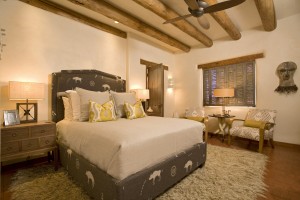By Lisa Samuel, Owner, The Samuel Design Group

I have been asked the question many times in my career whether the rug should be the first decision in designing a room’s interior. This is a variable and is determined on an individual basis; it is unique to each space and each individual for whom I am designing. Other designers may have a different point of view and may begin the design of each room with a rug. There is no right or wrong answer to this question. Rugs are definitely an important part of the design of any room.
There is a vast array of rugs in today’s marketplace. The fiber used to make rugs varies from natural to synthetic. I prefer natural fibers like wool, cotton, hemp, sisal, banana silk, and a variety of grasses. In addition to the various fibers available there are various styles to choose from as well; such as flat weave or pile and many others. Each of these fibers has specific characteristics and is therefore more appropriate for a specific use or style. Fine wool rugs that are hand knotted are very desirable and at the top of the price range. A very fine wool rug can take up to 1,000 days of work by a highly skilled weaver. A 9’ x 12’ rug is 108 square feet and 15,552 square inches. If the rug has 800 knots per square inch that would equal 12,441,600 knots! A highly skilled weaver can tie up to 12,000 knots per day. Fine rugs truly are a work of art and worth every penny spent.
Rugs can anchor a seating area in a large room, as well as add color and texture and warmth to any interior space. Consumers can be rather confused about what rug to choose or if they might choose carpet versus a fine rug. Rugs are either woven by hand or are machine loomed and range widely in price. Style and color are also a wide variable. Oriental rugs are generally produced in Russia, Turkey, India, Iran, Tibet, Pakistan, China, and Nepal. Persian rugs refer to a sub area of the Orient. When referring to a Persian rug, the area referred to is more specifically the “Old Persian Empire,” whose borders changed over its thousand year existence. Since 1979, Iran has been the modern day equivalent of Persia. Persian rugs are regarded by collectors as the finest rugs of all oriental styles of rugs. Genuine Persian rugs are hand knotted and their individual design reference specific townships and cities where they are created. Rugs produced in these countries are genuine oriental rugs and are handcrafted and, of course, are one of a kind. I consider them to be long lasting investments that become something one would pass along from generation to generation. With proper care, investment rugs will last a life time.
A professional interior designer can be of great help in determining the style, color, and size of the rug or rugs that would be right for your lifestyle, design, and budget.
Join Lisa and her guests on the first Sunday of each month for “Stylemakers By Design.” This live radio show is the monthly 2nd hour broadcast of All Things Real Estate and can be heard beginning at 1pm (Mountain Time) on Santa Fe’s 1260-AM and 101.5-FM, as well as via a stream of the show on SantaFe.com. Go to ATREradio.com for more information about the radio program and to also connect with The Samuel Design Group.
